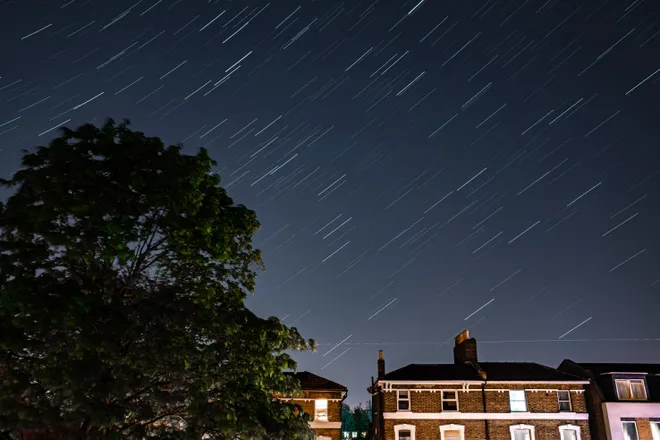The Lyrids are here: How and when to see the meteor shower peak in 2024
Get ready for another show in the sky, space fans. This time it will be a shooting star show.
The Lyrid meteor shower will peak in 2024 starting late Sunday night on April 21 and last through dawn on Monday April 22.
The Lyrids, one of the oldest known Metroid showers, began April 15 and runs through April 29 but the weekend will be the best time to get a glimpse of the show which NASA said can be seen by people across the world.
The first recorded sighting of a Lyrid meteor show, dates back to 687 BC by the Chinese, astronomers say.
Here's all you need to know about the phenomenon including what time to watch it and the best place to see it.

Lyrid meteor shower 2024:Visual guide to the celestial show
What are meteoroids? What are meteors? What is a meteorite?
Meteoroids are small rocks that are still in space. When they enter the Earth's atmosphere, they burn up, and create a tail of debris as they disintegrate before hitting the ground. During that point, they are are called meteors.
Those that survive a trip through the atmosphere and hit the Earth's ground are called a meteorite. Some of the small pieces of an asteroid have been traced as far away ask the moon and Mars.
Lyrids are known for their fast meteors, according to NASA, and can produce the occasional bright flash called a fireball.
Where is the best place to see the Lyrid meteor shower?
According to NASA, the best view in the Northern Hemisphere of the shower after moonset and before dawn.
Here are tips from the space agency:
- Pick an area well away from city lights or street lights.
- Bring a sleeping bag, blanket, or lawn chair.
- Lie flat on your back with your feet facing east and look up.
- Be patient. About 30 minutes in the dark your eyes should adapt and you should begin to see meteors.
Watch video:Meteor, fireball lights up sky in New Jersey, other east coast states
How many Lyrids will we see per hour?
Meteor showers are typically named after constellations, stars, and even asteroids.
If the sky is dark, and the moon is absent during this year's show, experts say, at peak viewers can expect to see 10 to 15 Lyrids each hour.

Natalie Neysa Alund is a senior reporter for USA TODAY. Reach her at nalund@usatoday.com and follow her on X @nataliealund.
Disclaimer: The copyright of this article belongs to the original author. Reposting this article is solely for the purpose of information dissemination and does not constitute any investment advice. If there is any infringement, please contact us immediately. We will make corrections or deletions as necessary. Thank you.






